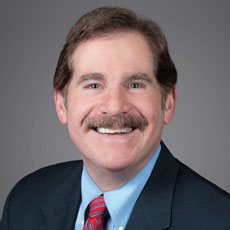
At the end of May, attorneys general from 16 states and the District of Columbia signed a letter to HHS Secretary Alex Azar urging him “to reconsider this regulatory rollback.” The “rollback” the 17 AGs seek to have the Secretary reconsider stems in part from guidance published by the Centers for Medicare & Medicaid Services on July 7, 2017. Among other things, the July 7, 2017 policy guidance from CMS took a more pragmatic and measured approach to enforcement of alleged nursing home violations.
Well-intentioned but misguided
When it comes to quality care and patient/resident safety, I will take a back seat to no one. I have been involved with healthcare since I was 21 and whether I worked “in the trenches” as a nurse, respiratory therapist, manager or clinical instructor, the one constant has been my unwavering commitment to quality care.
For 28 years of practicing health law, whether representing CMS, as I proudly did for 12 years, working for major healthcare-related nonprofit organizations or now, representing healthcare providers – primarily nursing facilities – my primary goal has been to see that patients and residents, especially the frail and elderly segment of our population receive the quality care they deserve. I am taking off my lawyer’s hat and donning my patient advocate hat for this article.
California Attorney General Xavier Becerra led the coalition of 17 AGs who implore Secretary Azar to not “roll back 2016 regulatory reforms.” Notably, CMS instituted those reforms to – as AG Becerra concedes -“improve the safety and well-being of nursing home residents…” One of the regulatory reforms that sticks in the craw of the AGs is the change in CMS policy to make civil money penalties more appropriate and less of an onerous and unsustainable burden. Specifically, CMS drew and important distinction between a per instance and a per day CMP and provided cogent and well-reasoned guidance to its 10 Regional Offices about what circumstance warrant a per day or a per instance CMP.
Significantly, a per day CMP often results in high six-figure and even multi-million dollar amounts that create an enormous burden on nursing homes and are actually counterproductive.
Are million-dollar CMPs really effective?
AG Becerra states that, “Civil money penalties are an essential tool to ensure nursing facilities comply with care standards and protect their residents.” Perhaps. But even good medicine when taken in extreme amounts can have harmful, if not fatal effects. I am personally aware of many nursing facilities, including former clients that have been driven out of business because they could not afford to pay a CMP in the ballpark of $2 million. Moreover, there is absolutely no evidence the 17 AGs can point to that credibly supports the contention that astronomical CMPs in the high six-figure range actually result in improved outcomes. What we do know is that the CMP money is diverted from resident care, quality initiatives, capital improvement, and hiring additional staff, all of which benefit residents.
There is yet another problem with the six-figure per day CMPs that the AGs might have not noticed. Here’s a typical situation drawing from one of my recent cases. CMS imposed a CMP in excess of $700,000 based on allegations that the nursing home had conditions which constituted “immediate jeopardy.” Even though we appealed that case, CMS demanded that the $700,000+ CMP be placed in escrow. (Note: while the statute and implementing regulations gives CMS the discretion whether to escrow CMPs or wait until after an appeal is resolved, virtually without exception, CMS collects those CMPs pending an appeal.) It took several years for the case above to be resolved and ultimately, after a full evidentiary hearing, an Administrative Law Judge determined that CMS was, for the most part, “clearly erroneous.” CMS was forced to refund over $600,000 – with interest. But, it took years to adjudicate the case, while CMS held on to the provider’s money for the entire duration.
So, there is a double whammy with the exorbitant CMPs – first, there is no evidence they lead to improved resident outcomes and actually drive smaller providers from the industry, and second, those huge amounts can be tied up for years until a provider proves that CMS’ allegations are factually and legally insufficient.
Creating a win-win culture
Several years ago when I was representing CMS in Region III, I was involved with a situation where a hospital acknowledged that several patients died as a result of a series of laboratory errors. Significantly, and to its credit, the hospital CEO held a press conference and admitted the errors. (Predictably, within twenty-four hours, local TV commercials began with the opening line, “Have you or a loved one been injured at [the hospital]?”) The local press tore the hospital apart and both the state department of health and CMS were under scrutiny in terms of what enforcement action they were going to take. The public pressure was intense and both the State and CMS were prepared to impose a high CMP.
(As an aside, my belief was that other hospitals around the country also had patient deaths from the same error but did not voluntarily disclose any adverse events. The errors were triggered when the reagent company used by clinical laboratories changed one of the coefficients used in analyzing blood and not all laboratory directors noticed and acted upon the change.)
My suggestion to CMS, which was more in the nature of policy than a legal opinion was that instead of imposing a six-figure CMP, CMS should allow the hospital to place the same amount of money in a dedicated fund to improve quality of care. To its eternal credit, CMS Region III accepted my recommendation and instead of being penalized for a tragic mistake, the hospital was allowed to use hundreds of thousands of dollars to actually improve patient care. Improving patient care rather than improving the federal fisc seems to make good sense. On many occasions since leaving CMS and representing nursing homes, I have suggested that instead of a huge CMP, CMS might consider permitting the facility to use those funds, placed in a dedicated account, to improve the quality of care. Unfortunately, not once has any of the CMS Regional Offices accepted that suggestion. No doubt, many of my former colleagues in CMS and its counsels – who are certainly well-intentioned and dedicated professionals – feel that the higher the CMP, the greater the likelihood that punished providers will be forced to come into compliance. Unfortunately, as noted above, there is no evidence to support that premise. All the evidence I have seen, albeit empirical and anecdotal is that the high CMPs that 17 AGs want to resurrect has a counterproductive effect and does nothing to further the laudable goal of improving quality care
Creating a false dichotomy
When reading the letter to Secretary Azar from AG Beccara and the 16 other AGs, one is left with the impression that the only tool in its quiver of arrows that CMS has is to impose a substantially high CMP. Nothing could be further from the truth. In fact, although not used as frequently as they should be, in my humble opinion, CMS has a number of enforcement actions it can impose on facilities that violate federal regulations.
For example, CMS can impose the following sanctions on nursing homes that are not in substantial compliance with Medicare’s requirements for participation: a denial of payment for new admissions until the facility comes into compliance; directed in-service training; a directed plan of correction; temporary management; transfer of residents, and even termination from the Medicare program. Nothing in CMS’ July 7, 2017 policy, that the AGs want to see rescinded, removes any of the significant enforcement remedies available to CMS and authorized by federal statute and regulation.
Right idea, wrong approach?
The 17 AGs have the right idea and protecting the roughly 1.4 million residents who live in nursing homes is of paramount importance. These residents deserve the very best and highest quality of care that can be delivered. But imposing the exorbitant CMPs that have driven many providers from the industry has not proven to be effective. Ironically, the unintended consequences of mega CMPs, often in excess of a million dollars, has had an adverse effect on countless residents – many of whom were forced to find a new home, complete with new caregivers and new friends, after a nursing home was forced to close because it could not pay outrageously high CMPs, often disproportionate to any alleged deficiency. (One recent case I handled had an almost $2 million CMP for hot water, even though there was no harm to any resident.) Respectfully, proportionality and common sense should play a role when CMPs are imposed. And, that is precisely what the CMS policy as stated in its July 7, 2017 policy memorandum suggests.
At the time CMS published its July 7, 2017 revised guidelines for CMP enforcement actions that the AGs find troublesome, I applauded CMS’ action in an article, noting that it was an enlightened and cogently reasoned approach. For example, paraphrasing what CMS stated, the punishment should fit the crime. More specifically, CMS Central Office provided guidance regarding when a per instance versus a per day CMP is warranted, the latter often exceeding a million dollars while the former can be about $20,000. Notably, in its revised and carefully thought-out policy guidance, CMS stated that not all allegations of immediate jeopardy where there is no harm to any resident even warrant a CMP. What a logical approach. Perhaps the most poignant guidance in the CMS policy that is under attack from the AGs is the following:
“When selecting an enforcement remedy, CMS Regional Offices review the survey findings to determine which remedy is most appropriate to address the noncompliance. The statute and regulations (488.406) outline a variety of federal remedies (CMP, directed plan of correction, directed in-service training, etc). We encourage use of the remedy that will best achieve swift and sustained compliance with federal health and safety requirements.”
Given the unintended consequences noted above as well as the fact that industry leaders from owner/operators to dedicated medical directors, administrators and directors of nursing complain that the current regulatory climate is making it increasingly difficult to recruit and retain qualified care givers, encouraging the use of the remedy that will best achieve swift and sustained compliance rather than a purely punitive approach sounds like the preferred path from my perspective.
A key point that is often overlooked in the debate about nursing home enforcement is the original intent of Congress. When Congress enacted OBRA ’87, it made it clear that the purpose of enforcement actions is to encourage nursing homes to achieve and maintain substantial compliance with the federal requirements of participation. And, that is exactly what the revised CMS policy aspires to achieve. The available enforcement actions were never intended to become a self-defeating punitive measure. I doubt that the 17 concerned AGs would want to rescind an action that actually benefits residents in the long run.
Attorney and author Alan C. Horowitz represents providers as a partner with Arnall Golden Gregory LLP and also serves on the Board of Directors of a Colorado nonprofit hospice organization. Previously, he served as Assistant Regional Counsel in the Department of Health and Human Services’ Office of the General Counsel for more than 12 years.




